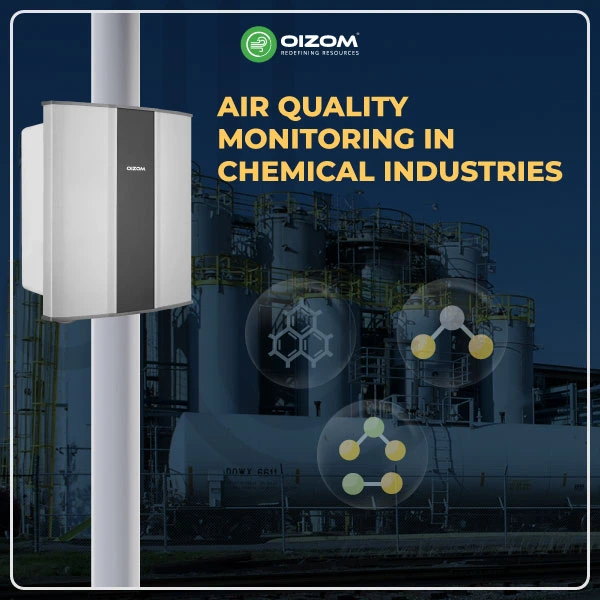Air quality and its influence on human health have become a focal point of environmental and public health discussions. Among various health issues associated with poor air quality, asthma – a chronic condition affecting the respiratory system – stands out due to its widespread prevalence and strong linkage to air pollution.
This blog post will delve into the relationship between air quality and asthma, the impact of common air pollutants, and the significance of air quality guidelines for asthma management. We’ll also explore strategies to mitigate air pollution, thereby improving air quality.
Effects of Poor Air Quality on Asthma
Being a respiratory disease, asthma is triggered quickly and dangerously by air pollution. The effects of asthma can cause inconvenience in breathing, and if it reaches severe levels, then it can reach death as well. If someone is residing in the surrounding with poor air quality
How Does Air Pollution Trigger Asthma Symptoms
Air pollution can trigger asthma symptoms by causing inflammation and narrowing of the airways, which leads to wheezing, shortness of breath, chest tightness, and coughing. It can also make the lungs more sensitive to allergens, the most common triggers of an asthma attack.
Impact of Air Pollutants on the Respiratory System
Air pollutants can cause direct damage to the cells lining the respiratory tract, leading to inflammation. They can also disrupt the immune system’s response, worsening allergic reactions that trigger asthma symptoms. Long-term exposure to air pollution can also cause irreversible damage to the lungs, exacerbating asthma and making it harder to control.
Factors are Increasing Asthma in Polluted Environments
Urbanisation, industrialisation, and increased reliance on fossil fuels are key factors leading to higher levels of air pollution, contributing to the increased prevalence of asthma. In polluted environments, individuals may be exposed to a complex mix of pollutants that can aggravate asthma symptoms.
Common Air Pollutants and Asthma
Ozone and its effects on asthma
Ozone, a primary component of smog, can trigger asthma attacks and make the lungs more susceptible to infections and allergens. It can also reduce lung function and cause permanent lung damage over time.
Particulate matter (PM) and its impact on asthma
Particulate matter, especially fine particles (PM2.5), can penetrate deep into the lungs and trigger asthma attacks. Chronic exposure to PM can also lead to the development of asthma, especially in children.
Nitrogen dioxide (NO2) and its association with asthma
Nitrogen dioxide, a common air pollutant from burning fossil fuels, can aggravate respiratory symptoms in people with asthma and make them more sensitive to allergens. High levels of NO2 have also been associated with the development of asthma in children.
Other air pollutants and their effects on asthma
Other air pollutants such as sulphur dioxide, carbon monoxide, and volatile organic compounds can also trigger asthma symptoms and exacerbate the condition. Furthermore, these pollutants can combine in the atmosphere to form secondary pollutants like ozone, further degrading air quality.
Air Quality Guidelines and Asthma Management
The Air Quality Index (AQI) and its Significance for asthma
The Air Quality Index (AQI) is a tool that indicates the quality of outdoor air and the potential health risks associated with it. For people with asthma, understanding and monitoring the AQI is crucial as it can help them to avoid exposure to harmful levels of air pollutants and manage their symptoms more effectively.
Strategies to minimise exposure to poor air quality
Minimising exposure to poor air quality involves staying indoors on high-pollution days, reducing outdoor physical activity when pollution levels are high, and using air purifiers to improve indoor air quality. In regions with high levels of traffic-related air pollution, creating ‘clean air zones’ around homes and schools can also help to reduce exposure.
Importance of indoor air quality for asthma control
Indoor air quality is equally important for asthma control as many common indoor pollutants, such as dust mites, mould, pet dander, and tobacco smoke, can trigger asthma symptoms. Regular cleaning, adequate ventilation, and the use of air purifiers can help to improve indoor air quality.
Technological advancements and innovations for air pollution control
Technological advancements and innovations can play a significant role in air pollution control. For instance, advanced air quality monitoring systems like those provided by Oizom offer precise, real-time data about a range of pollutants, enabling informed decisions about air quality management.
Learn more about Oizom’s air quality monitoring solutions here.
Community initiatives to promote clean air and reduce asthma triggers
Promoting clean air and reducing asthma triggers is a community-wide responsibility. Here are several initiatives that communities can take to encourage cleaner air and mitigate asthma triggers:
- Urban Greening: Planting trees helps to absorb air pollutants, reduce heat islands, and maintain cooler temperatures in urban areas. Similarly, initiatives that increase green spaces, such as parks, green roofs, and green walls, can also improve air quality.
- Public Transportation and Cycling Promotion: Encouraging the use of public transportation, walking, and cycling can reduce the number of private vehicles on the road, thus decreasing air pollution.
- Community Clean-Up Events: Organize regular community clean-up days where residents can help clean up litter and other pollutants that could contaminate the air.
- Indoor Air Quality Initiatives: Educate the community on the importance of indoor air quality. This includes reducing indoor smoking, using non-toxic household products, improving ventilation, and maintaining a clean home to reduce dust mites and mold, all common asthma triggers.
- Awareness Campaigns: Host events, workshops, or seminars that educate the public about the dangers of poor air quality and the importance of reducing pollution. These can also provide information about how to limit exposure to common asthma triggers.
- Advocacy for Cleaner Policies: Advocate for policies at the local, regional, or national level that reduce air pollution. This could include stricter regulations on industrial emissions, vehicle emissions standards, or renewable energy policies.
- Retrofitting Programs: Launch programs to help homeowners retrofit their homes to be more energy-efficient and less polluting. This can include initiatives like replacing old wood-burning stoves or installing energy-efficient heating and cooling systems.
- School Education Programs: Implement programs in schools to teach children about the importance of clean air, the dangers of air pollution, and ways to reduce asthma triggers. This can also involve creating asthma-friendly policies in schools, like having medication policies and ensuring school nurses are well-informed about asthma management.
- Recycling and Composting Programs: Promote recycling and composting to reduce waste that would otherwise be burned or end up in landfills, both of which contribute to air pollution.
- Community Monitoring of Air Quality: Implement community-based air quality monitoring programs. Local data collection and reporting can increase awareness and provide evidence for advocacy efforts.
By implementing these kinds of initiatives, communities can work together to improve air quality and reduce asthma triggers, thereby promoting the health and well-being of all community members.
Conclusion
The connection between air quality and asthma underscores the need for proactive management of air pollution. With informed policies, technological innovations, and community engagement, it is possible to mitigate the impacts of air pollution and create healthier environments. It’s critical for us all to understand and acknowledge that every breath counts.
To know more about how Oizom can assist in monitoring and improving air quality in your community, contact us today.
Together, we can work towards an environment that promotes respiratory health and well-being.






